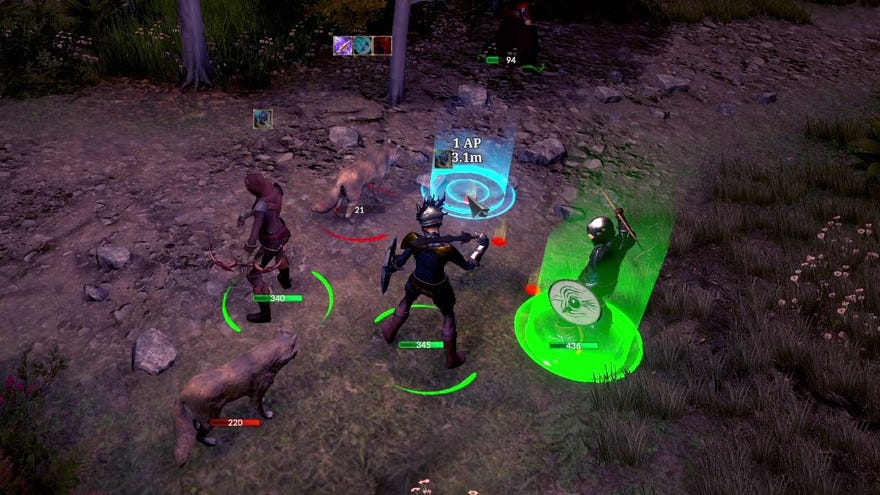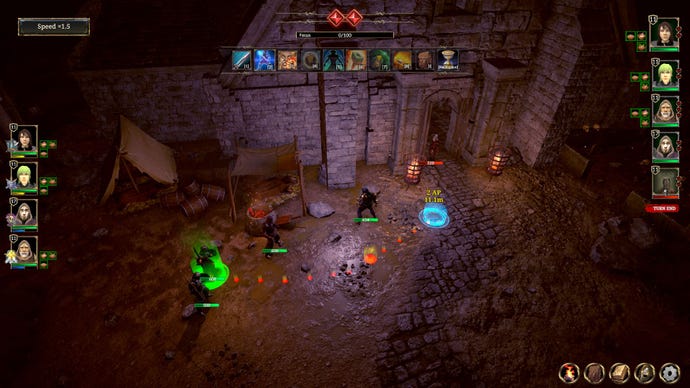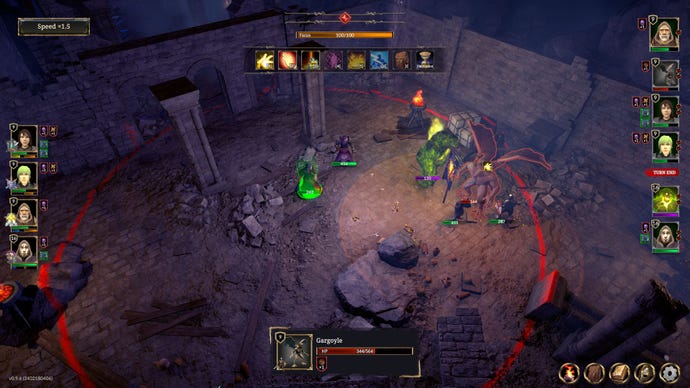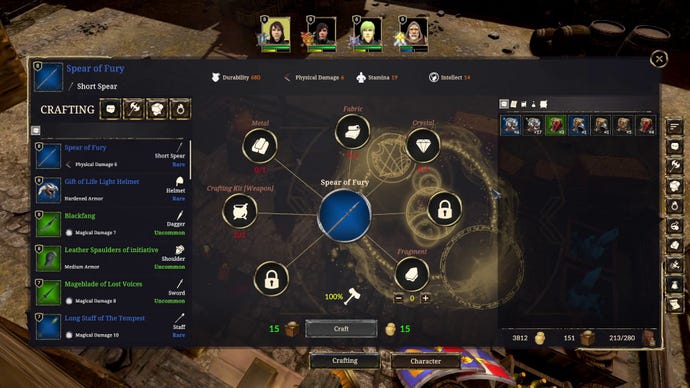HomeReviewsZoria: Age Of Shattering
Zoria: Age Of Shattering review: a systems-heavy RPG that punches above its weightIn peril? My fantasy kingdom?
In peril? My fantasy kingdom?
Image credit:Rock Paper Shotgun/Anshar Publishing
Image credit:Rock Paper Shotgun/Anshar Publishing

But boy, does it have spirit. You’re assigned to a sort of secret fortress near a mountain pass to prepare a retaliation. This fortress can be upgraded to confer bonuses or different potential squadmates, and any squaddies you aren’t using - more of them turn up, with alarming regularity, to add to your crew - can be sent on missions to get resources and that. There’s a good spread of class options, including magic users like Necromancers and Priests, a Thief for your rogue type, Hunters for a bow-wielding ranger, and more martial characters like a Lancer or Kingsman. I was a Sentinel, which is a tankier character with big area buffs that help the whole party.
There are loads of little knock on effects with your squad. If you have a Battle Cleric in your party you can use the healing shrines out in the world, meaning you can heal without having to rest, and classes confer bonuses during resting time that are useful too, like stopping bleeding or healing curses. This is cool. It extends to some side quest dungeons, which need a particular character type to get through an obstacle - a Kingsman to repair a big geared door, for example. But the dungeons don’t tell you this before hand, and to change your squad makeup you have to haul ass all the way back to your fortress - and then the dungeons aren’t marked with “need a Kingsman!” afterwards, so in most cases I just forgot and couldn’t be arsed finishing those quests off.
Nightmare ModeThis is later in the game, when the difficulty starts ramping up again, but the opening was honestly balanced to be so difficult that if I hadn’t been reviewing it I would have walked away from Zoria. You have to push through (also all fights make the screen go a bit greyscale, so sorry about the screenshots).Image credit:Rock Paper Shotgun/Anshar Publishing

This is really all in service to Zoria’s combat, which is both good and bad. Like many turn-based combat systems, you’ve got your Action Points to use on moving, attacking, or using an ability. It’s satisfying to get a cascade of good turns: using your Priest to stun an enemy archer, while your Necromancer casts a damage-over-time pestilence on the tank, but your Lancer buffed everyone’s shield first so you can afford to keep both your spellcasters in a slightly more dangerous position. But Zoria also gestures towards systems that feel like they should be there, but aren’t. You can find alternate routes into fights that might put you in a better position, but you can’t actually do a surprise attack. Putting your archer or spellcasters in good positions is essential, but there aren’t any different elevations or, like, half cover, or the ability to move one character indvidually to do a pincer attack, so you basically just play every fight in a 2-2 formation like a football team of fantasy LARPers.
Image credit:Rock Paper Shotgun/Anshar Publishing


You may wonder why I have completely abandoned talking about the plot or setting, and that is because it really takes a background to the systems. This is a clicky, systems-heavy RPG. You will not be shagging any elves, and it’s all isometric anyway so I’m not sure what benefit you’d get out of it. None of your potential squadmates have stories or personalities, and most have a duplicate back at base anyway, so there aren’t really any emotional stakes in play on a micro level fight to fight, or really on a macro level with the saving the world business.
You won’t find a best mate in Zoria’s sidequests either. They’re of the eliminate some bandits, help out the local village variety, but really whatever the framing of the mission is (missing daughter; lot of skeletons) the outcome will be going to a dungeon and fighting a few waves of lower level enemies (small spiders; nefarious Izirians) before taking on an elite boss (big talking spider queen; huge Izarian necromancer). The setting in which you do this is very nicely outfitted, with medium-ish maps full of plants and ruined buildings and weird crystals for set dressing, and a day/night cycle. The most compelling storytelling is, rather than line-to-line dialogue, in the larger plot point as you discover the Izirians are using unknown, part-magic technologies to teleport past your defences. It’s intriguing, lore-lite stuff that swiftly becomes lore-heavy when dialogue and explainers are piled on top.
Zoria is doing a lot of stuff. It’ll remind you ofBaldur’s Gate,Dragon Age, Lord Of The Rings, even Terry Brooks' weird fantasy books, and a bunch of it is done well, and in interesting ways. But in other cases the ambition has stretched beyond breaking point. But you kind of love your terrier even though it pisses on your cushions sometimes, right?